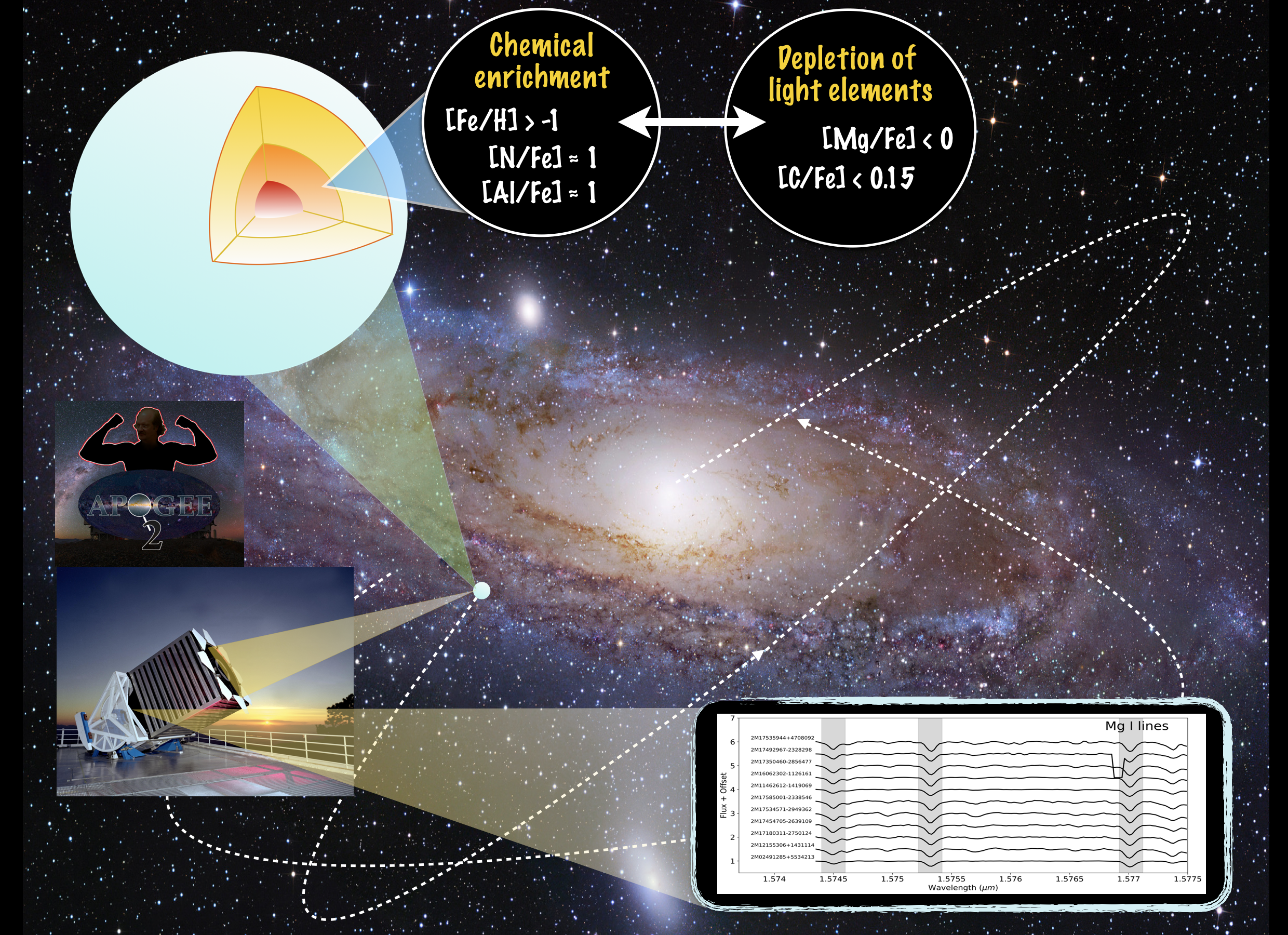A team 1 of astronomers were on the lookout for fossil relics of the early Milky Way when they came across an exciting accidental discovery: They found compelling evidence for a new family of giant stars with unusual stellar nucleosynthesis products previously unknown. These stars not observed to this day, which not only differ in the elements they contain with respect to normal Milky Way stars, but have orbital properties suggesting that they may be of an extragalactic origin.
The team used data from the Apache Point Observatory Galactic Evolution Experiment (APOGEE-2), which is used to map many different elements (including those key to life like carbon, nitrogen and oxygen) across the Milky Way galaxy, by observing the chemical composition of atmospheres of ~150,000 giant stars in the near-infrared through the APOGEE instrument, a high-resolution spectrograph. Working in the near-infrared allows it to penetrate the obscuring dust which blocks optical wavelengths. APOGEE is a preparatory work for the GAIA mission, notably to develop methods that will be used for GAIA.
Measuring the composition of this huge sample allowed the researchers to look for chemical peculiarities, leading to the discovery of a small group of stars very different from any previous known sample.
A living fossil left over from the early day of the Milky Way?

The newly discovered population is very deficient in magnesium and carbon but with high levels of enrichment in nitrogen, aluminum, suggesting that they are not associated with any present-day Galactic globular cluster. Their unique chemical properties make these anomalous stars the ideal candidates for a living fossil left over from the early days of the Milky Way or even the fossil relics of disrupted extragalactic globular clusters. This latter scenario is more probable because only extragalactic star clusters contain stars with a chemical pattern similar to the new stellar population discovered, suggesting that they were associated with extragalactic systems.
“Other speculative scenarios include the possibility that they owe their unusual atmospheric composition to binary mass transfer and/or pollution by Supernova explosions of stars of about 30 solar masses” explains J. G. Fernández-Trincado from the Universidad de Concepcion, Chile, lead author of the study and a PhD student at the time. “Such galactic fossils allow astronomers to reconstruct an important piece of the chemical history of our Milky Way.”
The team plans to use these newly discovered stars to better understand nucleosynthesis and stellar evolution and to study how some ancient globular clusters could be destroyed during their passage in the disc of the Milky Way. The arrival of the GAIA data will multiply the possibilities of "galactic archeology" of this type.
1 Team composed of astronomers at Université Bourgogne - Franche-Comté, Universidad de Concepcion, the Instituto de Astrofísica de Canarias, the Observatorio Nacional Rio de Janeiro and SDSS-IV collaboration (led by J. G. Fernández-Trincado, Annie C. Robin, Olga Zamora, and Diogo Souto, this work was supported by the CNES and by the Région de Franche-Comté and Institut des Sciences de l’Univers)
REFERENCES OF THE PUBLICATION
J. G. Fernández-Trincado et al. (2017), Atypical Mg-poor Milky Way Field Stars with Globular Cluster Second-generation-like Chemical Patterns, ApJL 846 L2, https://doi.org/10.3847/2041-8213/aa8032
CONTACTS
- Scientific contacts : J.G. Fernandez-Trincado, Universidad de Concepción (Chili), jfernandez at astro-udec.cl
Annie Robin, Institut UTINAM - (OSU Theta-CNRS/Université de Franche-Comté), annie.robin at obs-besancon.fr - Head of the Astronomy and Astrophysics program at CNES, Olivier Lamarle, olivier.lamarle at cnes.fr